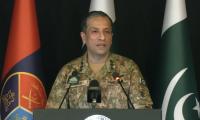While the idea of micro-schools may sound promising or even innovative, can it effectively tackle the daunting chronic challenge of out-of-school children in Pakistan?
The chief minister of Sindh recently appeared enthusiastic and confident about this concept, approving an additional budget of Rs800 million to establish 300 digital micro schools in the province. These schools aim to enrol 0.3 million out-of-school children through the semi-autonomous Sindh Education Foundation (SEF).
My initial research shows that out of the 300 planned schools, 50 schools are already operational: 45 in Karachi and five in Sehwan Sharif, which is also the hometown of the chief minister.
Digital micro schools are, in fact, non-formal schools that run accelerated courses over 18 months. During this period, enrolled students learn languages (English, Urdu and possibly Sindhi) and mathematics and science concepts using iPads/modern electronic devices.
In terms of infrastructure, these schools are established in a small, rented or community-donated room in a house, where a maximum of 30 students can be accommodated comfortably on a floor. It sounds like non-formal homeschools, with one major difference: students hold iPad instead of books. The pedagogy and mode of learning differ from traditional schools, as the duration of each class is two hours, and the schools support at least four shifts per day.
The students are not allowed to take these iPads to their homes and are expected to hand them over to the teacher at the end of their class. Regarding the eligibility for admission, children aged seven years and older, who are currently out of school, are admitted to these micro schools. One micro school caters to 100 students for 18 months. Last, following the completion of the shortened courses, students need to be mainstreamed into the formal education system, for which arrangements are yet to be made.
Here comes a million-dollar question: how can we effectively reach genuine out-of-school children in the vicinity? It remains the most challenging aspect of the project, and I speak from experience. Nearly a decade ago, a UKaid-funded initiative titled ‘Education Fund for Sindh’ launched a project aimed at enrolling out-of-school children in three areas of Sindh viz Karachi, Khairpur Mirs and Qambar Shahdadkot.
The strategy involved identifying genuine out-of-school children, locating nearby private schools and then enrolling them by covering their fees, books and uniform expenses.
To identify these children, the project relied on data from two sources: the Benazir Income Support Programme (BISP) and third-party surveys. Despite diligent efforts, the project struggled to enroll even 0.2 million children over two years. During the period of monitoring and scrutiny of student data, it was discovered that half of the children identified as out-of-school children were already enrolled in other schools, and had inadvertently and advertently migrated to this programme.
In essence, enrolling 0.3 million out-of-school children in a year is no easy task. Hiring and training 600 teachers, conducting surveys, and managing logistics within such a short timeframe is indeed a formidable challenge.
The SEF requires dynamic, visionary and actively engaged leadership with strong credentials. Unfortunately, in recent years, retired bureaucrats have been hired for the managing director position. This practice of recycling bureaucrats is demoralizing for young and competent officers who are keen to introduce innovative ideas. Since its establishment in 1992, the SEF has managed to enrol 0.9 million through its various programs.
Given this track record, how is it expected to enrol 0.3 million students just in one year? Isn’t it ironic? The SEF continues to struggle with its existing responsibilities, including the task of functionalizing 500 closed or poorly performing schools in Sindh. Despite efforts, only 100 schools have reportedly been revived so far.
With 26.2 million out-of-school children (OOSC) in Pakistan, focusing efforts on non-formal education models will not lead to significant gains. Since Pakistan’s inception, over 20 programmes have been introduced at various times, some successful, others discontinued halfway, and some continuing in altered forms to this day.
Currently, non-formal institutions account for 8.0 per cent of education institutions (25,106) in the country, which is less than religious schools or madrassahs (14 per cent or 43,613). The sustainability of non-formal institutions remains a challenge, primarily because it does not have permanent premises and other necessary resources. Therefore, this sector lacks the potential for substantial expansion and scaling up.
Thus, random, short-sighted and superficial initiatives merely represent the symptomatic treatment of a deeply rooted chronic problem. Out of the 7.6 million OOSC in Sindh, 4.18 million are girls who have either never set foot in the classroom or dropped out due to various reasons, largely due to the deplorable conditions of essential facilities in public schools.
At the primary level, where the highest number of OOSC (3.2 million) is concentrated, 66 per cent of schools lack electricity, 38 per cent lack drinking water, 43 per cent lack toilets, and 39 per cent are without boundary walls. Amid this backdrop of neglect and inequality within formal education, the initiative of introducing digital micro schools with iPads appear grossly misplaced.
It is time to overhaul the entire education system and set our priorities right, accompanied by enhanced transparency, accountability and a long-term vision
The writer is an education expert and can be reached at:
asgharsoomro@gmail.com
People of that time believed that an eclipse was a symbol of displeasure of gods
Debt-to-GDP ratio, which stood at 51% in 2009-10, peaked at 74% in 2019-20 and remains alarmingly high at 65% in 2023-24
Point is not to pour cold water over government’s achievements, but to look at baseline metrics
Loss of biodiversity is stark reminder that urban mismanagement is not just infrastructural failure but ecological...
Strong public warning systems can also help ensure quick evacuations in places prone to fires
PPPs in Pakistan's WASH sector face significant regulatory and policy challenges that hinder their effectiveness







